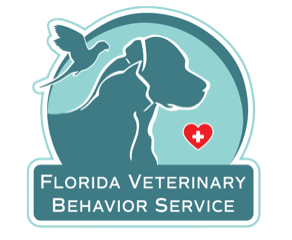The other day I was having lunch with a friend. She was telling me about her new boyfriend. While we were talking, her phone dinged. She blushed and a shy smile swept across her face. I asked her if that sound represented a text message from him and she said “yes.” The ding had triggered her to blush-an emotional response of excitement-that I observed through her facial expression.
Suddenly, it occurred to me that I had observed something similar a few days ago with my dog Delta. While I was tidying up around the house, I reached underneath the kitchen sink for a plastic grocery bag. When I pulled my head out from underneath the sink, Delta was standing beside me wagging her tail, and panting with her ears forward. She was awfully excited about something. Then it occurred to me that I use the plastic grocery bags as poop bags when I take the dogs for a walk. The sound of me going to get the grocery bag had triggered her behavior, an emotional response of excitement. She associated the sound of my getting a grocery bag with going for a walk. This type of learning is called classical conditioning.
Classical conditioning (associative learning) occurs when an animal associates a previously neutral stimulus with an involuntary or emotional response. We can observe a change in the dog’s behavior through the body language that the dog displays. In Delta’s case, she associated the retrieval of the grocery bag (neutral stimulus) with going for a walk. Walks cause her to act excited, pant and wag her tail. Through classical conditioning, the grocery bag retrieval now causes that same reaction, even if we are not going for a walk. In the case of my friend, that particular ding from her phone was associated with her new boyfriend. The thought of him made her happy, causing her to blush. Just like Delta, she had an emotional response to a neutral stimulus. Both Delta and my friend were subject to classical conditioning and it changed their behavior without any conscious thought on their part. This is called automatic learning.
I don’t care that Delta had learned to associate plastic bags and walks, but anytime I reach for a grocery bag now, she gets excited. When she gets overly excited for walks, she flies out the front door jumping and bouncing around making leash walking challenging to say the least. I wanted Delta to learn a little self-control before we departed on our walks.
I decided to ask Delta to sit before exiting our apartment for walks. Performing a behavior other than jumping around would be hard for her. You know the old saying; “Got ants in your pants?” Well, this is Delta once she knew we were going for a walk.
I went to get a grocery bag and of course, Delta began to exhibit excited behavior. Then I walked to the front door to get her leash as she followed me. The minute I hooked up her leash she began jumping and bouncing around. I asked her to sit. At first, she didn’t even pay attention to me. The longer I stood there waiting, however, the less intense her behavior became. Again, I asked her to sit. Finally, she stopped bouncing around long enough to sit. At that point, I opened the door to reward her behavior and we went for a walk.
This type of learning is called operant conditioning. Operant conditioning occurs when an animal’s behavior operates on, or has an effect on the animal’s world-causes a consequence. The animal’s response is the key to making something happen. In other words, by performing a certain behavior, an animal can change what happens in her environment. For Delta, sitting was the key to making the front door open so that she could enjoy a walk. She heard me say, “sit” (cue), she sat (behavior) and the front door opened (consequence).
A consequence influences, either positively or negatively, the probability of a behavior reoccurring in the future. I wanted to make sure the consequence for sitting was rewarding to Delta so I chose to open the door when she sat and let her enjoy a walk. Consequences that dogs find rewarding reinforce behaviors, making them more likely to be repeated in the future. By opening the door after Delta sat, I increased the likelihood that she would repeat this behavior in the future. This is known as positive reinforcement.
In closure, Delta learned through classical conditioning that a retrieving plastic bag is associated with a walk. She learned through operant conditioning to sit before exiting the apartment for a walk. By opening the door, I rewarded her for sitting and increased the probability that Delta would sit at the door in the future.
How do I know that this will work in the future to keep her from bouncing around every time that I get a plastic bag? Because today when I went to retrieve a plastic bag, I found her sitting by the front door waiting for her walk.
